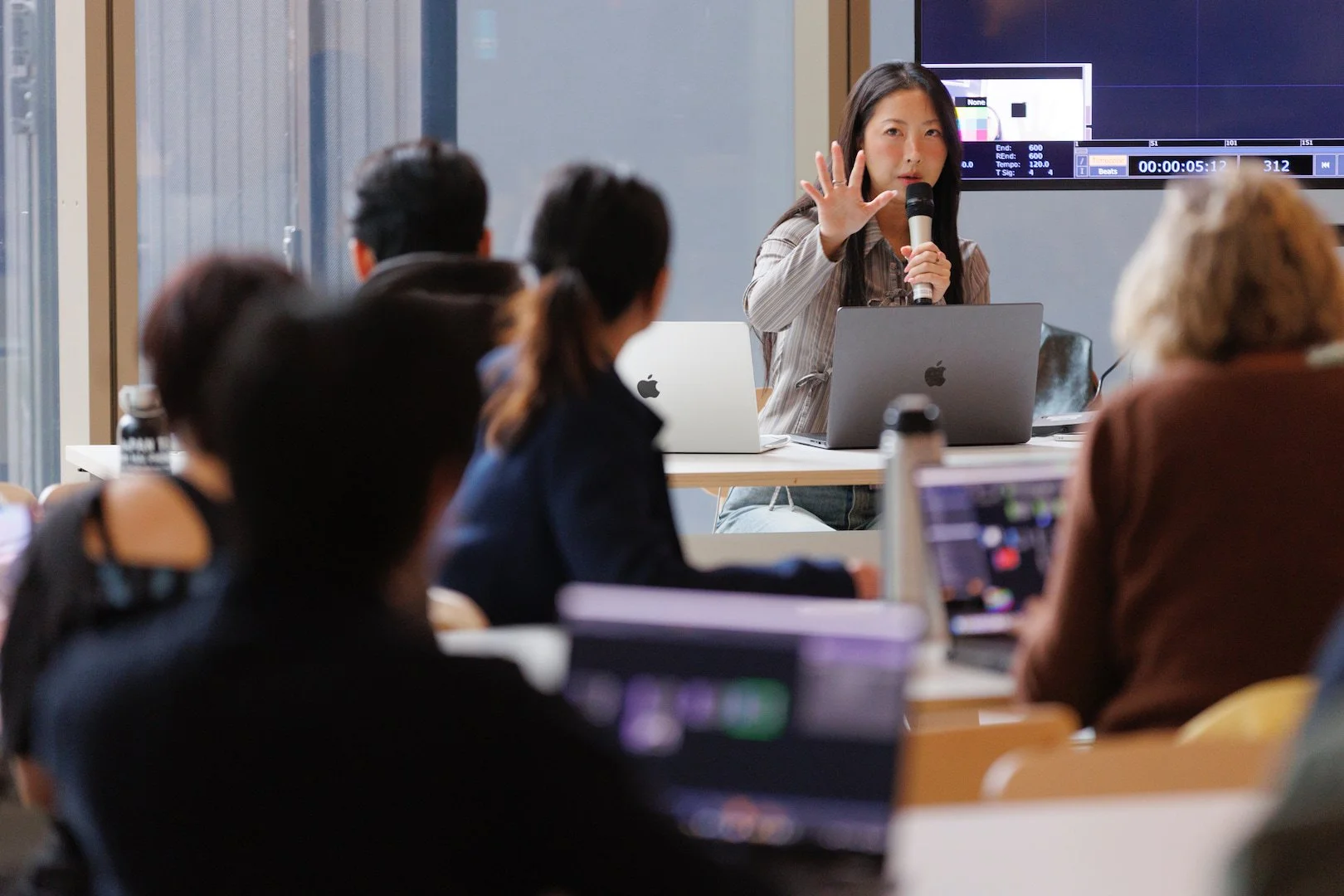Artists, machines and the space between
What happens when artists and machines collaborate? On Friday 3 October, The School of Computing and Information Systems and Science Gallery Melbourne joined for a day-long exploration of AI in creative practice as part of the Melbourne Fringe Festival.
Through artist-led discussions, performances and workshops, the program invited creatives to navigate the complexity of artificial intelligence and interrogate it as a tool for new forms of creative expression.
“This sort of gathering underscored the need to have a community so that we can go beyond the superficial in AI and art”
The event featured presentations from two Art x AI Creative Research Residencies, each delving into the human–machine relationship through distinct artistic lenses.
In Depth Perception, artist Alisdair Macindoe and researcher Dr Lea Frermann explored how automated linguistic meaning could be embodied and negotiated through improvised dance. The collaboration culminated in a large-scale performance where twenty dancers responded in real time to movement prompts generated by an AI “choreographer” delivered through headsets.
“It was an exciting departure from my usual work,” said Dr Lea Frermann. “I had the pleasure to collaborate with performance artist Alisdair Macindoe to explore the intersections of language, art & AI. I've learned so much from seeing things through a different lens.”
Meanwhile, Mat Spisbah and Dr Jasmin Pfefferkorn presented their work drawing on social nostalgia. Hylozoic examines the shifting aesthetics of synthetic media and the emotional resonances surrounding human vs machine-generated content.
“We shape technology, and technology shapes us,” reflected Dr Pfefferkorn. “Mat and I explored it through a disruption of the animate–inanimate binary, while Alisdair and his dancers showed it in an embodied, practice-based way, via a human-machine feedback loop.”
For Spisbah, the collaboration explored the idea of contamination and purity in current conversations around AI.
“I hope people could see the metaphor of radiation and its application to AI – the atmospheric contamination of the internet, media, information environment post-2022,” he said.
He challenged the opposition of human and machine:
“The rose coloured glasses of social nostalgia influences our perception and the binary we posit against AI and Human is far more interrelated than it seems.”
He also credited Pfefferkorn for grounding their conceptual work in academic lineage:
“She taught me the practice of research as a discipline, not just a feeling. She was so expertly able to frame my outlandish thoughts into something that resonated with these academic histories. This new positioning opened 100's of new metaphors, channels and cycles in the project.... it was generative, to say the least”
The day concluded with a hands-on Artist-Led Workshop by Touch Collective (Minnie Park and Nick Marriott), Monica Lim and Mel Huang Buntine. Participants experimented with MediaPipe as a performative tool to add gesture control, hand tracking and object detection via a webcam.
“It really felt like we were helping to foster a nascent community of tech-curious artists and art-curious techies who are facing AI with a critical gaze yet open minds. Creative technology is becoming more and more complex at its heart, yet more and more simple to engage with at a superficial level. This sort of gathering underscored the need to have a community so that we can go beyond the superficial in AI and art,” said Monica Lim
“The present moment feels shaky and uncertain as we navigate shifting ground.””
The sessions opened up space for the community to judge for themselves: is AI a collaborator, a disruptor, or just another medium?
By day’s end, many left with fresh insights and methods on how artists can lead the way forward through working with tension, care and possibility.
"There's always been a sense that something has to die to give birth to the new,” said Dr Jasmin Pfefferkorn. “We've proclaimed the death of memory with writing, the death of painting with photography, the death of photography with computational images and yet everything persists. It doesn't die but mutates, transforms, disfigures, expands. The present moment feels shaky and uncertain as we navigate over shifting ground."
Photography by James Henry.





















